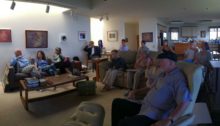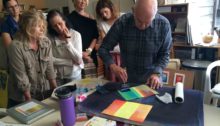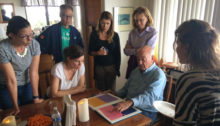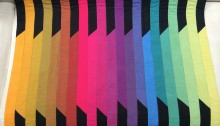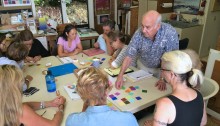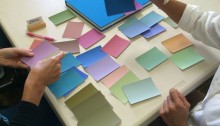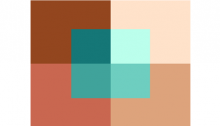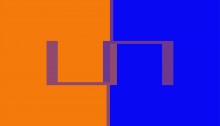Color Relationships 1, Spring 2016 week 5
The fifth and final session of the Color Relationships class for Spring 2016 was held on Wednesday, May 4. The class shared the results of their last assignment, heard from guest artist Valérie about her color explorations, and watched a video that demonstrated how color, pattern, and viewing distance are all important considerations when creating a work of art. See the full post for class materials, photos, and final assignments.
